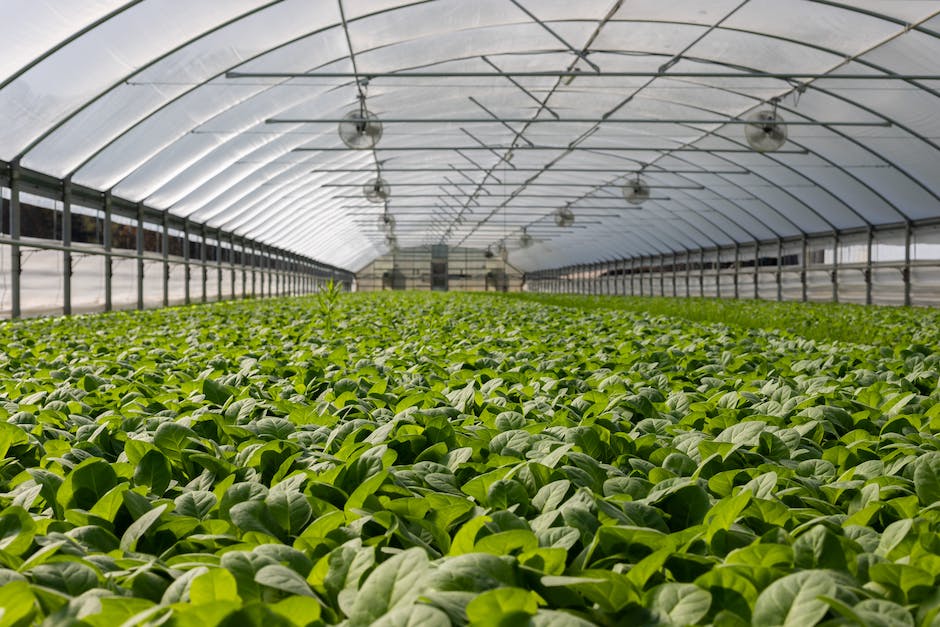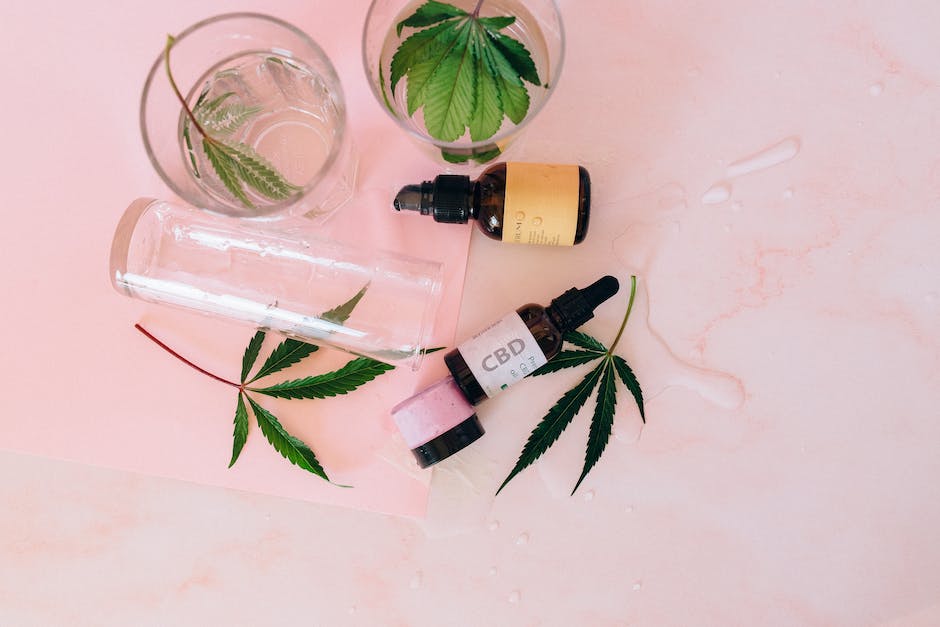Cannabis Yield-Boosting Tactics: An in-Depth Look Into Topping and LST
As the cannabis industry continues to flourish, cultivators are constantly seeking innovative methods to maximize their yield without compromising quality. Two popular techniques that have gained significant attention in recent years are topping and low-stress training (LST). These cultivation tactics not only aid in increasing plant productivity but also allow growers to have greater control over their plants’ shape and size.
Topping, which involves removing the top growth tip of a cannabis plant, is used to encourage lateral growth. By removing the apical (topmost) bud, the plant’s hormone distribution is altered, promoting the growth of numerous lower branches. This technique helps to create a more bushy, multi-cola structure, which ultimately leads to increased yields.
In contrast, low-stress training focuses on gently bending and securing plant branches in order to manipulate their growth direction. By training the branches to spread out horizontally instead of growing upwards, more light penetration is achieved throughout the plant canopy. LST allows for better distribution of resources while ensuring optimal light exposure for each bud site. This technique not only enhances the overall bud development but also minimizes the risk of uneven growth and shading.
Both topping and LST are effective methods for increasing yields, but they require a careful understanding of each plant’s specific needs and growth stages. Timing is crucial, as these techniques are typically performed during the vegetative stage when plants have sufficient time to recover and redirect their growth patterns.
It’s important to note that while topping and LST can greatly improve yields, these techniques demand patience and an eye for detail. Regular monitoring, gentle manipulation, and precise execution is key to avoid causing stress or damage to the plants. Additionally, cultivators must tailor these methods to the specific strain they are growing, as different cannabis varieties react differently to training techniques.
In the next segment of this blog post, we will delve deeper into the step-by-step process of topping and LST, exploring the best practices, tips, and potential challenges associated with each technique. Stay tuned to learn how to effectively implement these yield-boosting tactics into your cultivation practices to achieve optimal results.
Understanding topping and LST techniques (Definition and benefits)
Topping and Low-Stress Training (LST) are two common cultivation techniques used to increase cannabis yield and optimize plant growth. Understanding these tactics is crucial for any professional cultivator looking to maximize their harvest.
Topping refers to the process of cutting off the main stem’s apical bud to encourage the growth of multiple colas or main branches. By removing the apical bud, the plant’s growth is redirected to the lateral branches, allowing for more buds to form. This technique helps create a bushier and more productive plant.
The benefits of topping are manifold. Firstly, it promotes horizontal growth, ensuring that the plant uses its available space efficiently. This can be particularly advantageous when cultivating in confined areas or indoor gardens. Additionally, by encouraging the growth of multiple colas, topping increases the overall flower yield. More colas mean more bud sites, resulting in higher quantities of potent and aromatic flowers.
Low-Stress Training (LST) is another effective technique used to manipulate the shape and structure of cannabis plants. Unlike high-stress techniques such as super cropping, LST aims to gently bend or tie down the branches to achieve an even canopy and maximize light exposure.
LST works by spreading out the main branches, allowing the lower bud sites to receive more light. By doing so, growers can ensure that the lower parts of the plant receive an adequate amount of light to develop into healthy and productive buds. Additionally, LST helps prevent the formation of a dominant central cola, redirecting the plant’s energy towards lateral growth and creating an even distribution of flowers.
One of the main advantages of LST is its simplicity and non-invasive nature. Unlike topping or other high-stress techniques, LST involves minimal physical damage to the plant. Instead, growers gently manipulate the branches over time, promoting healthier growth patterns without hindering the plant’s overall development. This technique is especially beneficial for cultivators aiming to maintain a professional and aesthetically pleasing garden.
In conclusion, understanding and implementing topping and LST techniques can significantly enhance cannabis yield and optimize plant growth. Topping encourages the growth of multiple colas, resulting in increased bud production and a bushier plant structure. LST, on the other hand, promotes an even canopy and improves light distribution, ensuring maximum bud development throughout the entire plant. By incorporating these methods into cultivation practices, professional cultivators can achieve higher yields and superior quality crops.
Topping: What it is and how to properly perform it (Step-by-step guide)
Topping: What it is and how to properly perform it (Step-by-step guide)
Topping is a cannabis cultivation technique that involves the removal of the main central stem’s apical bud, known as the topmost bud. By removing this dominant bud, the plant’s growth hormones are redistributed to the lateral branches, enhancing lateral growth and creating a bushier plant. This technique is particularly beneficial for indoor growers looking to maximize their yield in limited space.
To properly perform topping, follow these step-by-step instructions:
1. Timing is crucial: Topping should be done when the plant has developed at least three to five nodes, typically during the vegetative stage. This allows the plant to recover and redirect its energy towards lateral branch development.
2. Prepare the tools: Ensure that you have a pair of clean, sharp scissors or pruning shears. Sterilize your tools with rubbing alcohol to prevent the spread of any potential infections.
3. Identify the target bud: Locate the main central stem’s apical bud, which tends to be the highest and most dominant growth tip on the plant.
4. Make the cut: Using your sterilized tools, make a clean and precise cut just above the target bud. The cut should be performed at a 45-degree angle to minimize any potential damage to surrounding tissue.
5. Monitor and care for the plant: After topping, closely monitor the plant for any signs of stress or shock, such as wilting or drooping leaves. Provide proper nutrients, water, and ensure adequate light levels to support its recovery and encourage lateral growth.
6. Encourage lateral branches: As the plant recovers, you will notice the growth of new lateral branches emerging from the lower nodes. These branches will eventually become the new main colas, leading to increased bud development and higher overall yields.
7. Train and support: To further enhance lateral growth, consider implementing Low Stress Training (LST) techniques. LST involves gently bending and securing branches away from the center of the plant to promote even light distribution and enhance bud development.
It’s important to note that topping should only be done during the vegetative stage, as performing it during the flowering stage can negatively impact yield and overall plant health. Additionally, it’s crucial to maintain a clean and sterile environment throughout the process to prevent any potential infections or diseases.
By mastering the art of topping, cannabis cultivators can manipulate the plant’s natural growth patterns to their advantage, achieving larger and more productive harvests. Proper execution of this technique, coupled with other cultivation strategies, can help you unlock the full potential of your cannabis crop.
The science behind topping and its impact on cannabis plants (How it promotes bushier growth)
Topping is one of the most effective cultivation techniques used to enhance the yield and structure of cannabis plants. This practice involves cutting off the top part of the main stem, also known as the apical meristem, during the early vegetative stage. The purpose of this technique is to encourage lateral growth and create a bushier plant structure.
The science behind topping lies in the plant’s natural response to the removal of the apical meristem. When the main stem’s top growth tip is removed, the plant redirects its energy to the lateral branches, promoting their growth and development. This redistribution of energy leads to the formation of multiple main colas instead of a single dominant one. As a result, the plant becomes more compact and dense, making efficient use of light and space and ultimately leading to increased yields.
The process of topping triggers the release of auxins, a class of plant hormones responsible for growth regulation. Auxins are primarily produced at the growing tip of a plant and control apical dominance by suppressing the growth of lateral branches. By removing the apical meristem, we disrupt this hormonal balance, allowing the latent potential of the lateral branches to be activated.
Once the apical meristem is removed, the plant’s hormonal signals shift, encouraging the growth of dormant lateral buds. These lateral buds are now free to develop into new vertical branches, creating an intricate network of colas throughout the plant canopy. With more colas receiving direct light, photosynthesis and nutrient uptake increase, resulting in larger and denser buds during the flowering phase.
Furthermore, topping greatly enhances airflow and light penetration within the plant canopy. By reducing the plant’s height and creating a more compact structure, the lower branches receive more light, and the overall plant receives sufficient airflow. This improved air circulation minimizes the risk of moisture buildup and reduces the chances of mold or pest infestations, thereby promoting healthier growth and higher crop quality.
In conclusion, the science behind topping lies in its ability to promote bushier growth in cannabis plants. By removing the apical meristem, we redirect the plant’s energy to lateral branches, stimulating their growth and creating a denser canopy. This process enhances light penetration, optimizes nutrient uptake, and improves overall airflow, leading to increased yields and healthier, more robust crops. Incorporating topping into your cultivation practices can be a game-changer for boosting cannabis yields while maintaining a professional and efficient approach to cultivation.
Reaping the benefits of LST (Low stress training) (Increased light penetration and better airflow)
Low stress training (LST) is an effective technique used by many cannabis cultivators to enhance the overall quality and yield of their plants. By gently manipulating and training the branches of the cannabis plant, growers can ensure better light penetration and airflow, ultimately reaping numerous benefits.
One of the major advantages of incorporating LST into your cannabis cultivation strategy is increased light penetration. As plants grow, the lower branches often receive less light due to shading from the upper canopy. This can result in lower bud development and reduced overall yield. By carefully bending and securing the branches in a way that spreads them out, LST allows for more even distribution of light across the entire plant. This ensures that every bud site receives an adequate amount of light, leading to more vigorous growth and higher yields.
Furthermore, LST promotes better airflow within the plants’ canopy. When cannabis plants grow naturally, dense foliage can create pockets of stagnant air, which can promote the growth of pests and diseases. By using LST, growers can open up the plant structure, allowing air to flow more freely between the branches. Improved airflow helps to lower humidity levels, reduce the risk of mold and mildew, and create an environment conducive to healthy plant growth.
Implementing LST techniques is relatively straightforward. As the plants begin to develop, carefully guide the branches outwards by gently bending them and securing them in place using soft plant ties or garden wire. Take care not to apply too much force or stress on the branches, as this may cause damage. By gradually training the branches in this manner, you can encourage the plants to grow in a more horizontal manner, spreading out the canopy and maximizing light exposure.
It is important to note that LST should be started early in the vegetative stage of growth to allow time for the plants to recover and adjust before transitioning to the flowering stage. Regular monitoring and adjustments may be required as the plants continue to develop, ensuring that they are properly trained and supported throughout the entire growth cycle.
In conclusion, reaping the benefits of LST in cannabis cultivation involves increased light penetration and better airflow. By incorporating LST techniques into your growing practices, you can optimize the yield and overall health of your cannabis plants. Remember to approach this method with care and give your plants ample time to adapt, as LST requires patience and ongoing attention. With proper execution, LST can be a game-changer in maximizing your cannabis yield and quality.
LST techniques: Methods and tools for training cannabis plants (Mainlining, scrogging, etc.)
LST Techniques: Methods and Tools for Training Cannabis Plants
In the world of cannabis cultivation, one of the key techniques used to improve yields is Low Stress Training (LST). By gently manipulating the growth of the plants, cultivators can create a more even canopy, increase light penetration and airflow, and ultimately maximize the bud production. In this section, we will explore some popular LST methods and the essential tools needed to implement them effectively.
1. Mainlining:
Mainlining, also known as “Manifolding,” involves strategically pruning and training the plant to develop a symmetrical structure with multiple main colas. The process begins by topping the main stem to encourage new growth at the node sites. As the plant continues to grow, these new branches are carefully trained horizontally to create an even canopy. Mainlining can significantly improve yields by promoting more consistent bud development across the plant, resulting in larger, denser buds.
2. Screen of Green (Scrogging):
Scrogging is a widely-used LST technique that involves using a screen or netting to train the branches of the cannabis plant horizontally. The screen is positioned at a specific height above the plants to encourage the branches to grow through the holes. As the branches grow through the screen, they are gently tucked back under the netting, creating an even canopy and preventing vertical growth. This technique optimizes light exposure and promotes bud sites along the entire plant, ultimately resulting in a higher overall yield.
3. Low-Stress Bending:
Low-Stress Bending is a simple yet effective LST technique that involves gently bending the branches of the plant to manipulate their growth direction. By carefully tying the branches down, cultivators can shape the plant and encourage lateral growth. This helps create an even canopy, boost light penetration, and promote the growth of colas in areas that would typically receive less light. Low-Stress Bending is a versatile technique that can be combined with other LST methods for more significant yield improvements.
Now that we have explored some popular LST techniques let’s take a look at the essential tools you will need to implement these methods effectively:
1. Plant Ties or Soft Plant Wire: These non-abrasive materials are used to hold branches in place when performing LST. They allow growers to bend and secure the plants without causing any damage or hindering growth.
2. Plant Trellis or Netting: Screens or netting can be used to create an even canopy and support branches during the Scrogging technique. They provide a structured framework that helps train the plant to grow horizontally and maximize light penetration.
3. Pruning Shears: Pruning shears are instrumental for topping the plants and selectively removing unwanted growth. They allow growers to control the plant’s shape and direct growth to maximize yields.
With the right knowledge, a meticulous approach, and the proper tools, LST techniques can significantly boost cannabis yields. Whether you choose to experiment with Mainlining, Scrogging, Low-Stress Bending, or a combination of methods, the ultimate goal is to create an optimal growing environment that allows your plants to reach their full potential.
Tips for successful LST implementation (When to start, how to manipulate branches)
When it comes to maximizing the yield of cannabis plants, implementing Low Stress Training (LST) techniques can make a significant difference. LST involves gently manipulating the branches of the plants to ensure even light distribution, promote lateral growth, and ultimately increase bud production. However, successful LST requires careful timing and proper branch manipulation. Here are some tips to help you achieve successful LST implementation:
1. Start early: It is crucial to begin LST techniques early in the vegetative stage when the plants are still flexible and supple. Typically, this occurs around the third or fourth week after germination. Starting early allows the plants to adapt to the training process more easily, ensuring better results.
2. Use gentle techniques: LST aims to bend and manipulate the branches without causing any damage. The idea is to create a more open canopy, allowing light to penetrate deeper into the plant. Use soft plant ties, such as garden twine or plant clips, to gently bend the branches. Avoid applying too much pressure that might break or injure the plant.
3. Optimize branch positioning: The main goal of LST is to position the branches in a way that exposes as many budding sites as possible to direct light. Bend the branches horizontally, away from the center of the plant, to open up the canopy. This technique allows light to reach lower branches, encouraging their growth and bud development.
4. Utilize bending and tying techniques: There are various LST bending and tying techniques that can be employed, depending on the plant’s growth pattern and structure. You can gently bend and secure branches using hooks, stakes, or even the rim of the pot. Ensure that the branches are securely fastened but not overly constricted, allowing room for growth and expansion.
5. Monitor and adjust regularly: As the plants continue to grow, regularly monitor the branches’ positioning and adjust them accordingly. Ensure that the branches are still receiving proper light exposure and are not overly crowded. Regular monitoring allows you to correct any issues promptly, ensuring optimal growth and maximum yield potential.
Remember, LST requires patience and careful observation. Each plant may respond differently to the training techniques, so it’s essential to adapt your approach accordingly. By implementing these tips and fine-tuning your LST techniques, you can facilitate healthier and more productive cannabis plants, ultimately reaping the benefits of increased yields.
Potential risks and limitations associated with topping and LST (Potential damage, stunting growth)
When it comes to increasing cannabis yield, tactics like topping and low-stress training (LST) have gained significant popularity among cultivators. These techniques involve manipulating the plant’s growth patterns to promote bushier, denser growth and create more bud sites. While they can be highly effective in boosting yields, it is important to consider the potential risks and limitations associated with these methods.
One of the main potential risks of topping and LST is the possibility of damaging the plant. Topping involves cutting off the tip of the main stem, which can lead to stress and shock for the plant. If not done correctly, this can result in irreversible damage and even death. Similarly, improper implementation of LST, such as excessive bending or tying down of branches, can cause them to snap or break, impacting overall plant health.
Furthermore, both topping and LST have the potential to stunt the growth of the plant if not executed properly. Topping may lead to slower recovery and a delay in the overall growth process. If the plant does not have enough time to recover before flowering, it may result in reduced yield potential. Similarly, overtraining the plant through aggressive LST techniques can weaken the stems and hinder nutrient uptake, ultimately compromising growth and productivity.
Another limitation to consider is the strain and genetics of the cannabis plant. Not all strains respond well to topping and LST, and some may not produce the desired effects or yield increase. Different strains have unique growth patterns and characteristics, and what works well for one may not necessarily work for another. It is crucial to research and understand the specific requirements of the strain you are cultivating to ensure that topping and LST will be beneficial.
To mitigate the potential risks associated with topping and LST, it is important to approach these techniques with caution and follow best practices. Careful attention should be given to timing, technique, and the overall health of the plant. Additionally, regular monitoring and adjustments are necessary throughout the growth cycle to ensure that the plant is responding positively to the training methods.
In conclusion, while topping and LST can be effective in boosting cannabis yields, there are potential risks and limitations to consider. Damage to the plant, stunted growth, and strain-specific variations are all factors that should be taken into account. By understanding these potential limitations and implementing the techniques correctly, cultivators can maximize the success of their cannabis yield-boosting tactics.
Combining topping and LST for maximum yield (Synergistic effects in improving overall cannabis growth)
Combining topping and low-stress training (LST) techniques in cannabis cultivation can have synergistic effects on overall plant growth, leading to maximized yields. Both methods target different aspects of the plant’s canopy and growth patterns, complementing each other to encourage the development of more robust and productive cannabis plants.
Topping involves strategically removing the main apical bud or top of the plant, which promotes the growth of multiple side branches. This technique helps create a bushier plant with an increased number of bud sites. By removing the top, the plant’s energy is redirected towards lateral growth, resulting in a more even distribution of buds along the entire plant.
On the other hand, LST involves gently bending and tying down the plant’s branches to create a more horizontal canopy. This technique allows for better light penetration, increased airflow, and optimized nutrient distribution throughout the plant. By manipulating the plant’s growth pattern, LST helps ensure that all parts of the plant receive an equal amount of light, resulting in more uniform bud development and improved overall vigor.
When topping and LST are combined, they work together to enhance each other’s benefits and create a truly harmonious growth environment for cannabis plants. Topping encourages lateral branch development, and LST optimizes the positioning of these branches for maximum sunlight exposure. By using both techniques simultaneously, cultivators can effectively control the height and shape of the plant, ensuring that light reaches even the lower parts of the canopy.
Moreover, the combination of topping and LST encourages a more even distribution of nutrients and water throughout the plant. With a bushier and more horizontally spread canopy, every branch and bud site can receive an adequate supply of essential resources, promoting healthy growth and reducing the risk of nutrient deficiencies or overexposure.
Additionally, by utilizing these techniques together, growers can maximize their use of space. Topped and LST-trained plants take up less vertical space as they grow wider instead of taller. This is especially beneficial for indoor cultivators or those with limited growing areas, allowing them to maximize their plant count without sacrificing yield potential.
In conclusion, combining topping and LST techniques in cannabis cultivation can significantly improve overall plant growth and yield. The synergy created by these methods promotes lateral branch development, optimizes light penetration and nutrient distribution, and maximizes the use of available space. By implementing both techniques, cultivators can enjoy healthier and more productive cannabis plants, ultimately leading to a more successful and rewarding cultivation experience.









